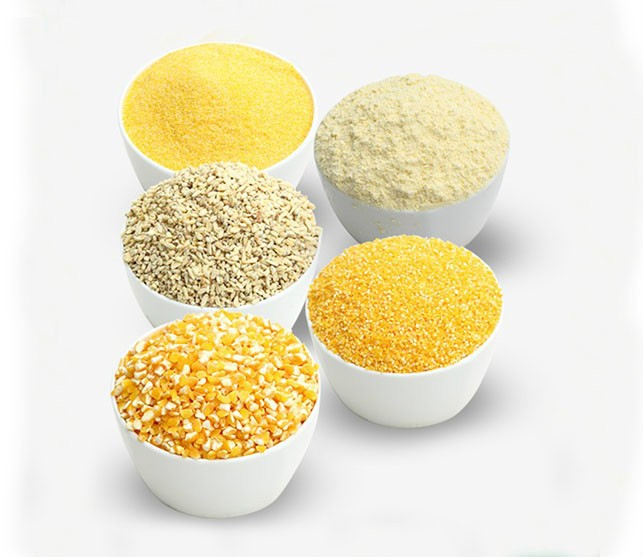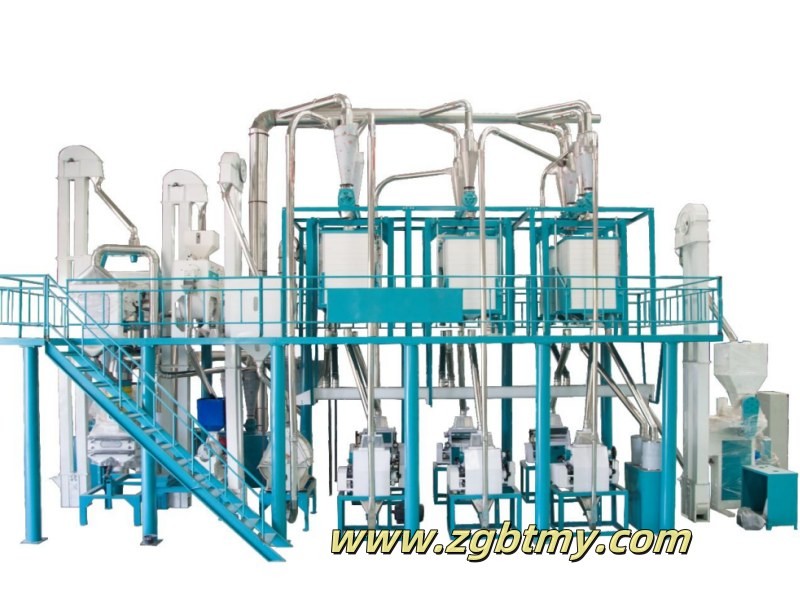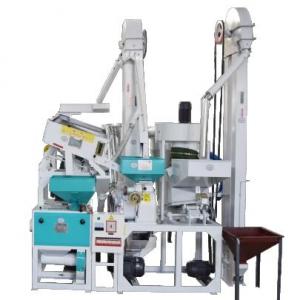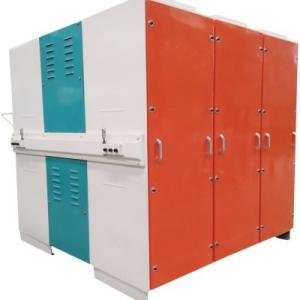50T Corn flour equipment
- Category: Corn processing machinery
- Product description:
50T corn granulating and processing equipment
Equipment can be customized according to actual needs.

[Product Features]
The entire production line is fully automated, saving workers and allowing one person to operate.
2. Complete functional processing such as corn cleaning, corn peeling, corn milling, and corn grinding.
3. Clean the corn and remove stones, metals, sand, and various impurities.
4. Peel the corn, remove the corn germ, and remove the black corn. After cleaning and peeling,
prepare the best corn raw materials for further processing into corn flour or coarse grains.
5. You can choose the appropriate sieve according to your requirements to make large, medium,
and small grits, as well as fine flour.
[Process Flow]
The design content includes process flow design, electrical control design, ventilation and dust removal design. The entire processing technology includes processes such as raw grain cleaning, peeling, polishing, embryo extraction, granulation, grading, and finished product packaging. It is equipped with auxiliary systems such as ventilation and dust removal, as well as electrical control. It combines the strengths of the latest domestic processing technology and has advanced and complete processes. 40-45% corn grits; About 25-30% corn flour; Feed powder accounts for about 30%.
1. Raw Grain → Elevator → Magnetic Separation → Screening and Stone Removal Cleaning Screen (A combined cleaning machine is used for cleaning, with the left side for screening and the right side for stone removal. The raw grain enters the cleaning screen through the elevator first, which consists of two layers of screens: the upper layer is 12mm * 12mm, which screens out impurities larger than corn, and the lower layer is 3mm * 3mm, which screens out impurities smaller than corn. After screening, the corn enters the stone removal machine to remove the shoulder stones in the corn)
2. A peeling machine (after cleaning, the corn enters the first peeling process, and the peeling rate is generally controlled at around 50%. The peeling rate can be controlled by moving the pressure weight) → Elevator →
3. Second peeling machine (after one peeling, enter the second peeling machine, with a peeling rate controlled at 80-95%)
4. Peeling and polishing machine (after the first and second peeling processes, it enters the peeling and polishing machine with a peeling rate of over 95%) → Elevator →
5. After three layers of peeling and polishing, the finished product enters the grading screen. 5-3% of the materials with untreated skin and embryonic roots are returned to the polishing machine for further processing, while the remaining materials enter the embryo extraction machine to further thoroughly remove the broken embryo, skin, and embryonic roots.
6. After embryo extraction treatment, the large naan seeds enter the granulator with adjustable particle size.
7. Brush powder machine, the granulated material enters the brush powder machine and brushes out about 10% of the degreasing powder →
8. Friction polishing machine, the powdered material is then subjected to friction polishing, brushed with surface sand to ensure that the finished corn grits are shiny and tidy
9. Efficient flat screen, materials enter the flat screen and are classified into return materials, large grains, medium grains, and small grains
10. The suction separator is used to process the graded corn ginseng and recycled materials to ensure that the finished product does not contain skin or black spots
11. Finished product packaging: The packaging is in the form of 5-25kg. Feed processing: The ash content in one layer of dehulled feed is relatively high, and the feed is directly discharged. The second and third layers of dehulled feed are further pulverized by a grinder and enter a screening machine to screen out about 15% of the fat powder. Then, they are mixed with the first layer of dehulled feed to produce about 30% of the feed powder.

INQUIRY
CATEGORIES
LATEST NEWS
CONTACT US
Name: HASSAN
phone:+8618603722872
Whatsapp:+8618569929372
Email:[email protected]
Add:Wenfeng District, Anyang City, Henan Province, China







